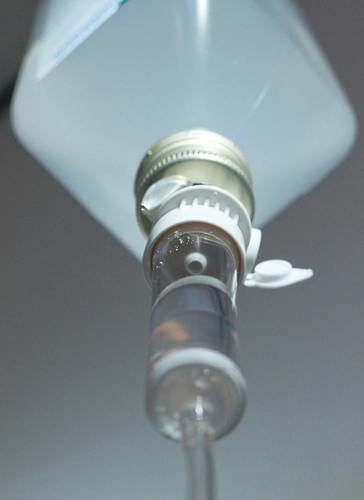Ensure Diagnoses Demonstrate Medical Necessity

Hint: Knowing payer policy will help boost your odds of success. Documentation is always the linchpin for successful reimbursement. Demonstrating that a service is medically necessary — and backing that up with documentation — is crucial. Documentation is always key to gaining appropriate reimbursement for your providers, but the importance is magnified when you’re reporting services that don’t always require anesthesia. Read on for some expert advice on how to establish the need for anesthesia and find payday success. Demonstrate ‘Medical Necessity’ Before you argue with an insurer that an anesthesia service should be covered because of medical necessity, be sure you know exactly what medical necessity is. Easy definition: Medicare defines “medical necessity” as services or items reasonable or necessary to diagnose or treat an illness or injury, or to improve the functioning of a malformed body member. When you submit a claim and connect it with one of your providers, that provider is attesting that he or she certifies that the reported services were medically indicated and necessary for the patient’s health. “Remember [your provider] has signed that he agrees with these statements,” explains Kim Garner-Huey, MJ, CHC, CPC, CCS-P, PCS, CPCO, an independent coding and reimbursement consultant from Birmingham, Alabama in her audio conference “Medical Necessity: Defining and Documenting to Support Billing.” Note Patient Circumstances Insurers consider each case individually to determine if the treatment method is reasonable and necessary. What might be unusual for some patients might prove to be medically necessary because of specific circumstances, says Kelly Dennis, MBA, ACS-AN, CAN-PC, CHCA, CPC, CPC-I, owner of Perfect Office Solutions in Leesburg, Florida. For example, medical conditions such as cancer, epilepsy, or seizure disorder can help justify medical necessity for anesthesia. The patient’s age or mental state (such as the lack of understanding what’s happening) might also come into play. So can conditions such as sleep apnea, because of the potential danger of airway compromise. Situation example: A physician plans to perform an MRI on a 3-year-old child. Most patients won’t require anesthesia for the test, but it is justified in this case because it will be so difficult for a patient this young to remain still during the scan. The same logic applies to adult patients who are mentally handicapped, psychotic, or unable to sit still because of pain or a physical condition. Administering anesthesia allows them to comply during the test or procedure. Focus on Best Diagnosis Even if a service is reasonable and necessary, the payer might deny your anesthesia provider’s involvement if your documentation doesn’t include the best-fitting diagnoses. Tip 1: Verify that you’re choosing diagnosis codes based on the patient’s current circumstances rather than his or her history. If more than one diagnosis code applies, include all on your claim instead of singling out one. Dennis advises also including the reason for surgery on your claim, though you should check with your payer before taking that step. “If you need additional codes to explain the patient’s physical status or the use of anesthesia, they’re usually secondary,” Dennis says. Tip 2: Check whether anesthesia-specific diagnosis options might apply. For example, Z92.83 (Personal history of failed moderate sedation) can help justify the use of anesthesia for patients who weren’t treated successfully with moderate sedation in the past. Tip 3: Get familiar with the payer’s approved diagnoses for a procedure. The lists can be lengthy, but combing through them is worthwhile because submitting a diagnosis that isn’t on the list can mean automatic denial. For example, diagnoses that can support medical necessity for monitored anesthesia care (MAC) during endoscopy can include: If you receive a denial because the diagnosis you submitted wasn’t on the payer’s approved list, talk with your anesthesia provider. A secondary diagnosis documented in the chart or medical record might be viable and turn the denial into payment. Know Payer Policies Your payers and providers may not always agree upon what is medically necessary. If a provider performs a service, he is doing it out of his judgment that it is medically necessary to treat the patient. The patient may get an explanation of benefits for her insurance company stating the service provided was not medically necessary, however. “If we all understand, at least on the physician and provider side ... the basis of it to begin with, we can head off some of those issues, as well as get paid appropriately for the services we’re providing and make sure our documentation supports that,” Garner-Huey says. There are two possibilities when you receive a denial based on medical necessity: 1. Covered, but not medically necessary in this case — Your provider may perform an E/M (or other) service, that the payer normally covers, but for some reason the payer does not feel the encounter is medically necessary for the claim you are submitting. These are the denials you should appeal, using your provider’s documentation. 2. Not covered, regardless of provider’s determination of medical necessity — There are some services your payer may never reimburse you for, regardless of your physician’s determination that the encounter was medically necessary for that patient at that time. Final note: Even if a service is reasonable and necessary, payers might limit or deny your claim if your physician provides the service more often than allowed under a coverage policy or more than what usually is accepted as the standard of practice. Double-check your payer’s policy to ensure you’re not overstepping its limits.




